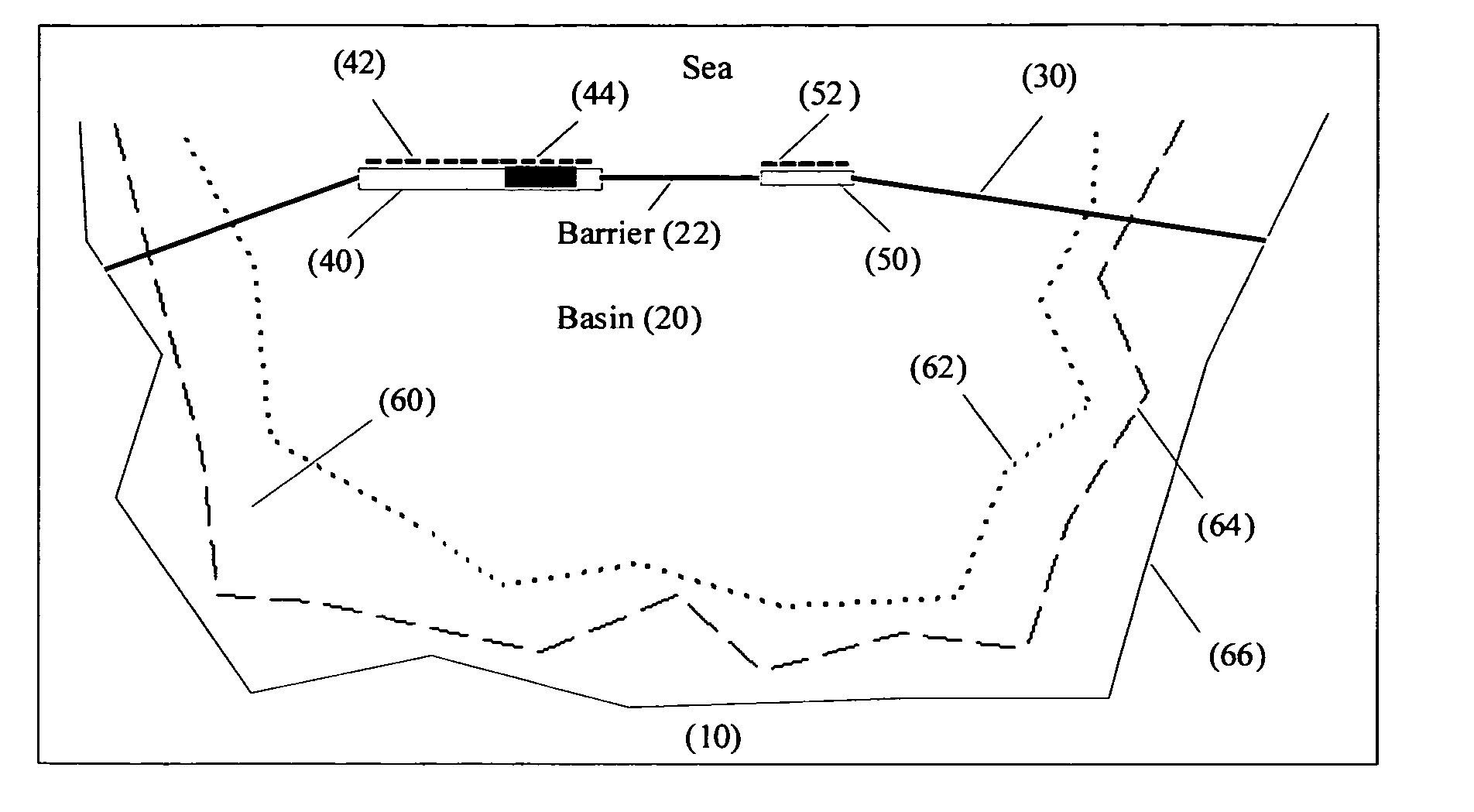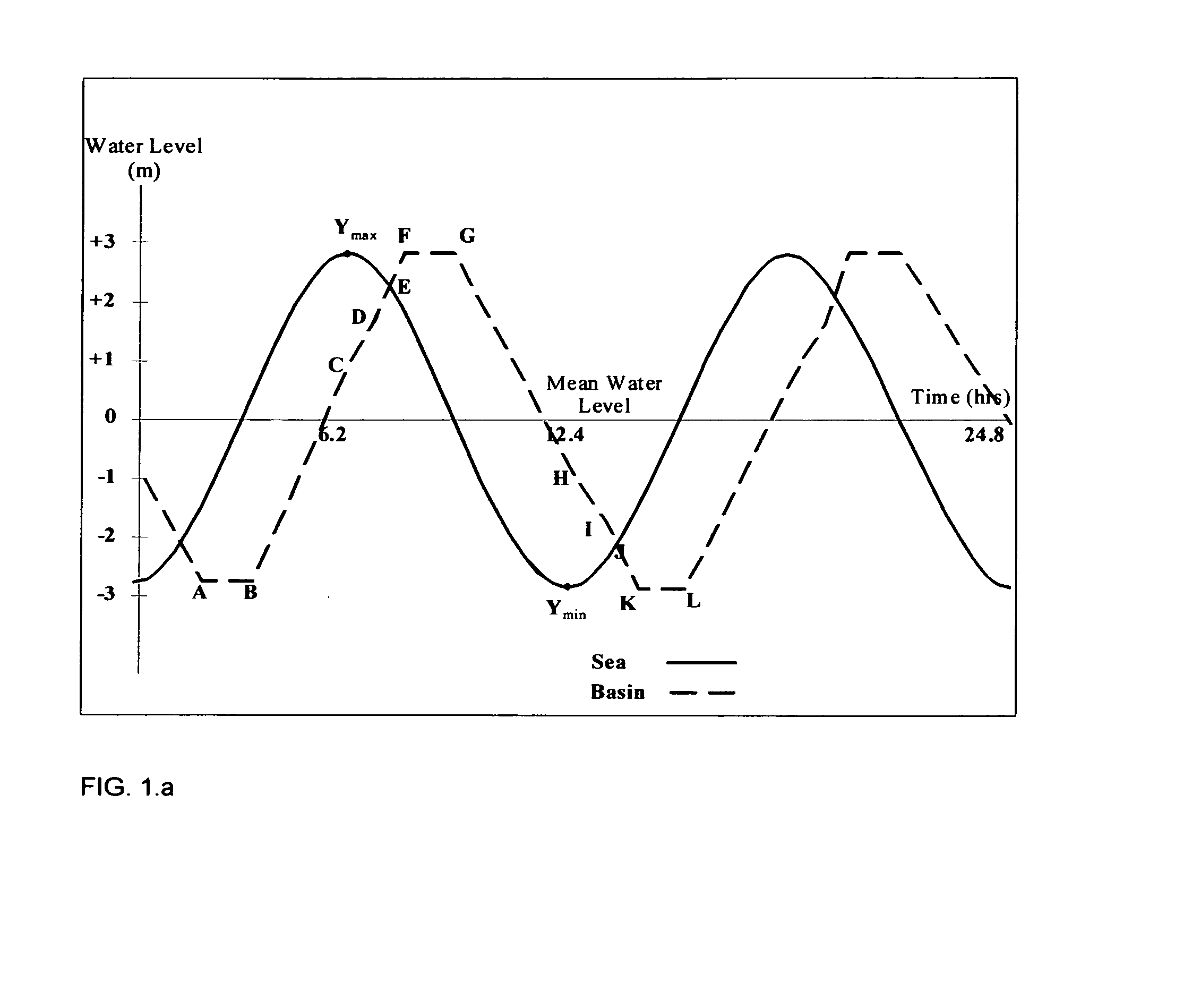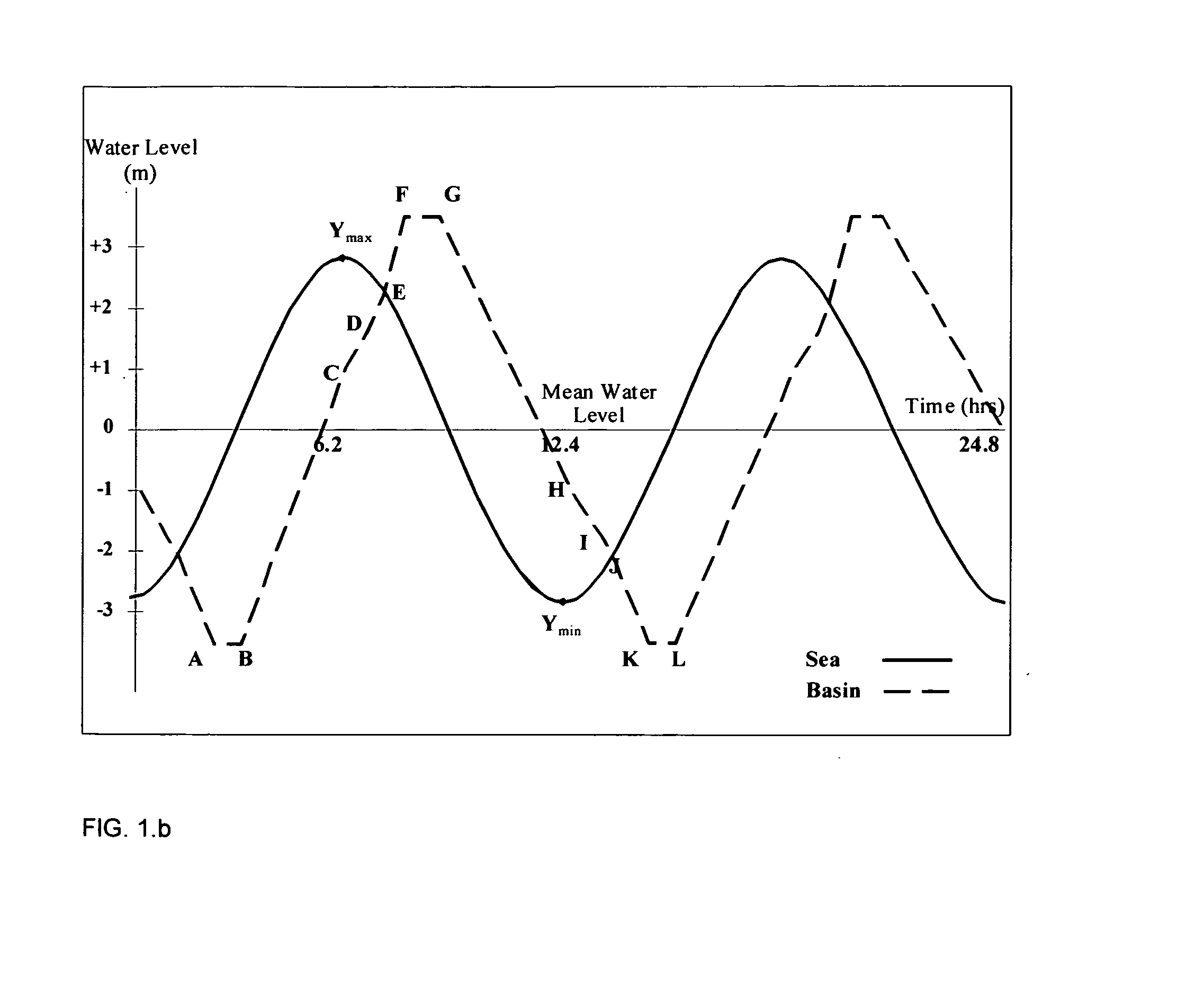Parallel cycle for tidal range power generation
a parallel cycle and power generation technology, applied in the direction of couplings, rotary clutches, fluid couplings, etc., can solve the problems of loss of intertidal habitat, major loss of intertidal zone, etc., to prevent deleterious sedimentation and reduce or eliminate the negative environmental impact of conventional operating cycles
- Summary
- Abstract
- Description
- Claims
- Application Information
AI Technical Summary
Benefits of technology
Problems solved by technology
Method used
Image
Examples
first embodiment
[0090]The degree to which the parallel cycle raises the water level in the basin defines various embodiments of the methods of the disclosure. A first embodiment is graphically illustrated in FIG. 1.a, and is further illustrated in FIGS. 2.a-2.j, which depict a tidal range power plant (10) comprised of a barrier (22) separating a basin (20) from the sea. The barrier (22) or enclosure is provided with an arrangement of dykes (30), and at least one powerhouse (40) as part of the barrier. The powerhouse (40) provides housing for turbine- generators (not shown). The turbine-generators are installed to produce power with flow from the sea to the basin and vice-versa from basin to sea. Separate turbine-generators for each direction of flow can be employed. Modem turbine-generators are available which generate power with flow in both directions. These are referred to as two way or double effect units. The powerhouse (40) is also fitted with at least one powerhouse gate (42) which controls ...
second embodiment
[0107]In accordance with a second embodiment, depicted in FIG. 1.b, the water level in the basin is caused to exceed the natural individual tidal cycle high tide, Ymax, and the natural individual tidal cycle low tide, Ymin (FIG. 1.a). One reason motivating this embodiment is its ecological advantages under certain circumstances. Neap (low) tides submerge and expose smaller areas of intertidal than spring (high) tides. At some locations with very high tides, this can produce heat stress on the intertidal zone. Vast areas of intertidal zone remain exposed at neap tides. Exposure to the summer sun over extended periods desiccates and stresses the intertidal zone with damaging consequences to its ecology. Exposure during summer neap tides has even been implicated in increased activity of predatory snails. Exceeding the natural individual cycle tidal range can therefore have beneficial environmental effects. Embodiment two therefore provides scope for environmental optimization.
third embodiment
[0108]The requirement that each natural individual cycle intertidal zone be submerged and exposed on each individual tidal cycle can be achieved by pumping by installing sufficient pumping capacity (turbine-generators). For extremely high tides, installing the necessary capacity can be very costly. Furthermore, very high tides are relatively infrequent. Therefore, the additional capacity required for their utilization is not economically justifiable. Nevertheless, the protection of the intertidal zone even for high tides is both desirable and achievable. the parallel cycle employs overtopping in order to expose and submerge the natural individual cycle intertidal zone for very high tides. The dykes (30) are built to a height so that they become overtopped or submerged for those tides which exceed a certain level. The specific tidal range for which overtopping is desirable is determined by the benefits of additional energy generation versus the cost of installing additional capacity....
PUM
 Login to View More
Login to View More Abstract
Description
Claims
Application Information
 Login to View More
Login to View More - R&D
- Intellectual Property
- Life Sciences
- Materials
- Tech Scout
- Unparalleled Data Quality
- Higher Quality Content
- 60% Fewer Hallucinations
Browse by: Latest US Patents, China's latest patents, Technical Efficacy Thesaurus, Application Domain, Technology Topic, Popular Technical Reports.
© 2025 PatSnap. All rights reserved.Legal|Privacy policy|Modern Slavery Act Transparency Statement|Sitemap|About US| Contact US: help@patsnap.com



